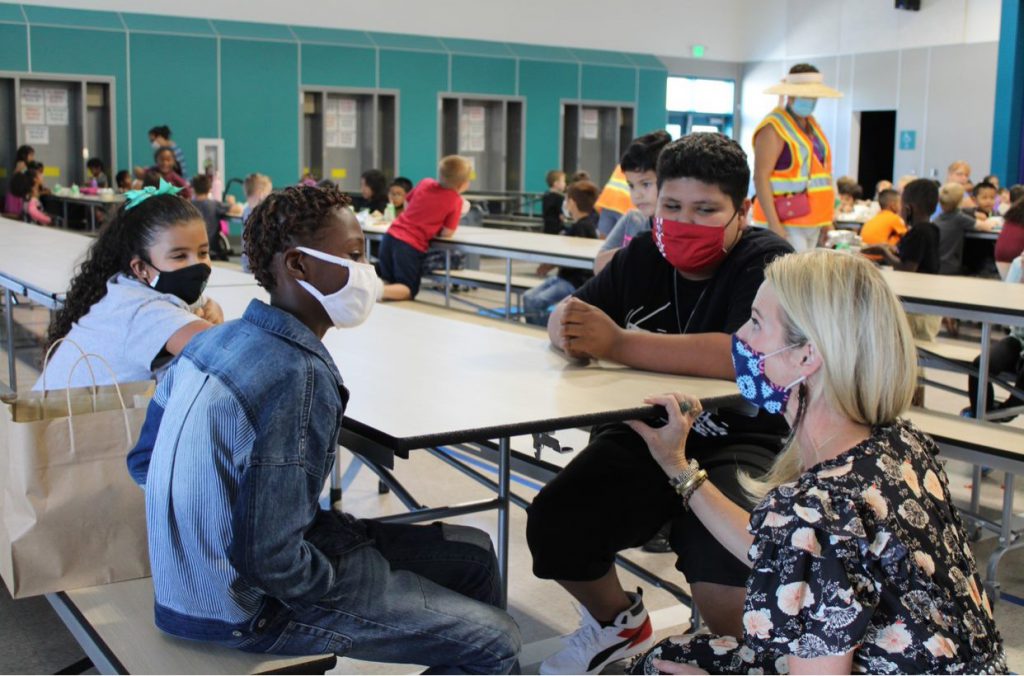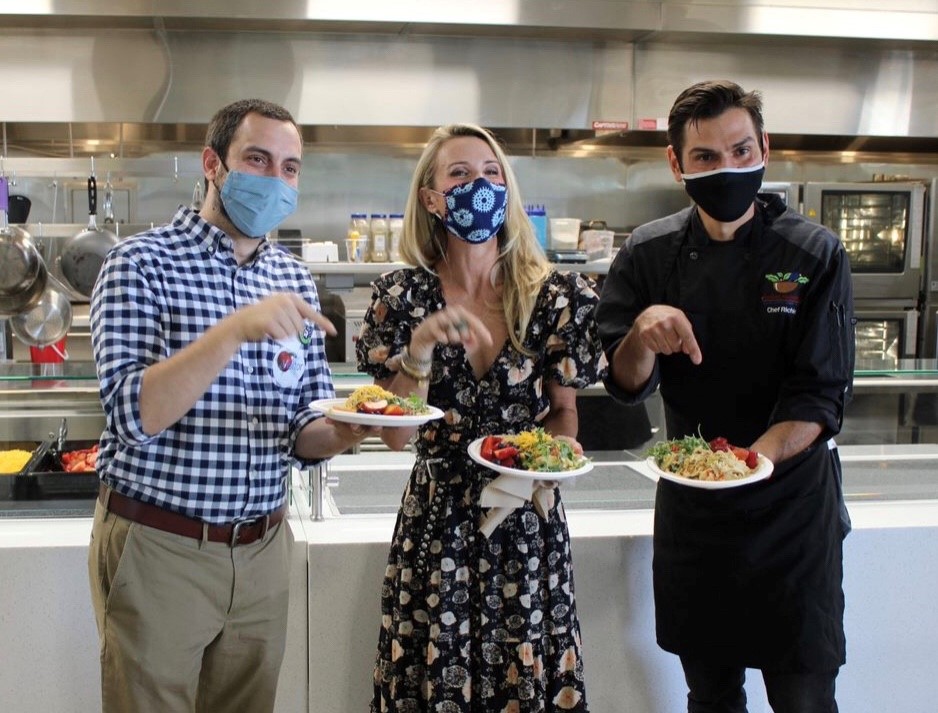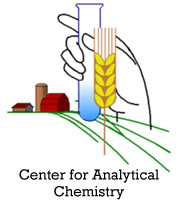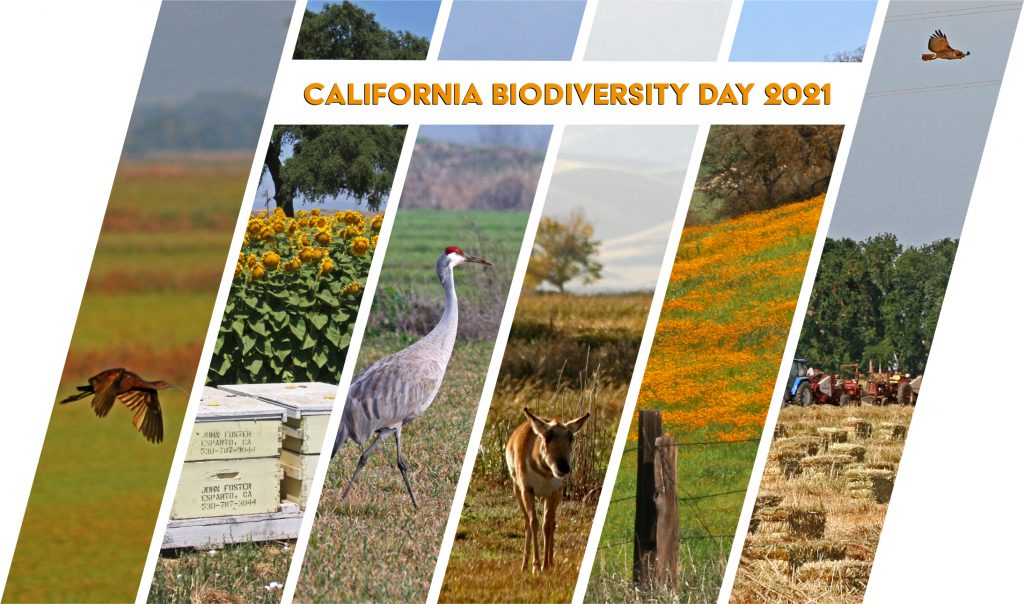-
Recent Posts
- Agritourism – California’s Pumpkin Patches: Hunter Farms
- CDFA Undersecretary Christine Birdsong counts down California CRUNCH!
- Celebrating Hispanic Heritage Month – California Farmer Mel Resendiz
- Secretary Ross on Water, Workforce, and the Future of California Agriculture — from AgNet West
- Agritourism – the Central Valley’s Best Pumpkin Patches
Recent Comments
- CA agriculture value surpasses $60B | Western Livestock Journal on Value of California Ag production tops $60 billion for first time
- Kathy de Contreras on CDFA IT department honored at “Best of California” awards
- El costo económico de las deportaciones masivas ya es visible en California - Espanol News on Nine California Counties Make Top-10 List for Ag Sales in the U.S.
- Deportations are taking a toll on California’s economy – and have only just begun – The News Beyond Detroit on Nine California Counties Make Top-10 List for Ag Sales in the U.S.
- Kenneth Cooper McNany on California Agricultural Heritage Club seeks nominations to honor pioneering farms and ranches more than 100 years old
Archives
- October 2025
- September 2025
- August 2025
- July 2025
- June 2025
- May 2025
- April 2025
- March 2025
- February 2025
- January 2025
- December 2024
- November 2024
- October 2024
- September 2024
- August 2024
- July 2024
- June 2024
- May 2024
- April 2024
- March 2024
- February 2024
- January 2024
- December 2023
- November 2023
- October 2023
- September 2023
- August 2023
- July 2023
- June 2023
- May 2023
- April 2023
- March 2023
- February 2023
- January 2023
- December 2022
- November 2022
- October 2022
- September 2022
- August 2022
- July 2022
- June 2022
- May 2022
- April 2022
- March 2022
- February 2022
- January 2022
- December 2021
- November 2021
- October 2021
- September 2021
- August 2021
- July 2021
- June 2021
- May 2021
- April 2021
- March 2021
- February 2021
- January 2021
- December 2020
- November 2020
- October 2020
- September 2020
- August 2020
- July 2020
- June 2020
- May 2020
- April 2020
- March 2020
- February 2020
- January 2020
- December 2019
- November 2019
- October 2019
- September 2019
- August 2019
- July 2019
- June 2019
- May 2019
- April 2019
- March 2019
- February 2019
- January 2019
- December 2018
- November 2018
- October 2018
- September 2018
- August 2018
- July 2018
- June 2018
- May 2018
- April 2018
- March 2018
- February 2018
- January 2018
- December 2017
- November 2017
- October 2017
- September 2017
- August 2017
- July 2017
- June 2017
- May 2017
- April 2017
- March 2017
- February 2017
- January 2017
- December 2016
- November 2016
- October 2016
- September 2016
- August 2016
- July 2016
- June 2016
- May 2016
- April 2016
- March 2016
- February 2016
- January 2016
- December 2015
- November 2015
- October 2015
- September 2015
- August 2015
- July 2015
- June 2015
- May 2015
- April 2015
- March 2015
- February 2015
- January 2015
- December 2014
- November 2014
- October 2014
- September 2014
- August 2014
- July 2014
- June 2014
- May 2014
- April 2014
- March 2014
- February 2014
- January 2014
- December 2013
- November 2013
- October 2013
- September 2013
- August 2013
- July 2013
- June 2013
- May 2013
- April 2013
- March 2013
- February 2013
- January 2013
- December 2012
- November 2012
- October 2012
- September 2012
- August 2012
- July 2012
- June 2012
- May 2012
- April 2012
- March 2012
- February 2012
- January 2012
- December 2011
- November 2011
- October 2011
- September 2011
- August 2011
- July 2011
- June 2011
Categories
- AG Vision
- Agricultural Education
- Agricultural Marketing
- Alternative Fuels
- Animal health
- Animal Welfare
- Asian Citrus Psyllid
- Biodiversity
- Border stations
- BSE
- Cannabis
- Cannella Panel
- Climate Change
- Climate Smart Agriculture
- Community-based Food System
- Conservation
- Dairy
- Drought
- Environment
- Fairs
- Farm Bill
- Farm Labor
- Farmers' Markets
- Fertilizer
- Food Access
- Food Safety
- Food Waste
- Glassy-winged Sharpshooter
- Growing California
- Healthy soils
- HLB
- Hydrogen
- Integrated Pest Management (IPM)
- Invasive Species
- Light Brown Apple Moth
- Livestock ID
- Measurement Standards
- Nutrition
- Organic agriculture
- Pierce's Disease
- Pollinators
- Specialty Crops
- State Board of Food and Agriculture
- Succession Planning
- Trade
- Uncategorized
Pages

CDFA scientist teams up with four-year old Palo Alto girl to identify rare stingless bees in California — from CBS This Morning
Posted in Uncategorized
Leave a comment
First Partner Jennifer Siebel Newsom sees CDFA’s Farm to School grant program in action

Posted in Uncategorized
1 Comment
Initial Ag stats for 2020 released
In 2020 California’s farms and ranches received $49.1 billion in cash receipts for their output. This represents a 3.3 percent decrease in cash receipts compared to the previous year.
California’s agricultural abundance includes more than 400 commodities. Over a third of the country’s vegetables and two-thirds of the country’s fruits and nuts are grown in California. California’s top-10 valued commodities for the 2020 crop year are:
- Dairy Products, Milk — $7.47 billion
- Almonds — $5.62 billion
- Grapes — $4.48 billion
- Pistachios — $2.87 billion
- Cattle and Calves — $2.74 billion
- Lettuce — $2.28 billion
- Strawberries — $1.99 billion
- Tomatoes — $1.20 billion
- Floriculture — $967 million
- Walnuts — $958 million
A comprehensive report for the 2020 crop year is schedule to be released in late 2021. Statistics are compiled by the USDA’s National Agricultural Statistics Service.
Posted in Uncategorized
Leave a comment
COVID-19 grants from USDA — $700 million for recipients who haven’t yet received significant federal assistance, including small producers, farmers’ markets and processors
From a USDA news release
The U.S. Department of Agriculture (USDA) today announced it will soon publish Requests for Applications (RFAs) for new grant programs – the Pandemic Response and Safety (PRS) Grant program and the Seafood Processors Pandemic Response and Safety Block Grant program – to support agricultural stakeholders who haven’t yet received substantial federal financial assistance in responding to the COVID-19 crisis. These grant programs will provide assistance to small businesses in certain commodity areas, including small scale specialty crop producers and processors, shellfish, aquaculture and other select producers, meat and other processors, distributors, farmers markets, seafood facilities and processing vessels. Today, USDA released grant forecasts for these new programs to help potential applicants determine their eligibility and to prepare to apply for funding. Approximately $650 million in funding is available for the PRS grants and $50 million is available for SPRS. All of these new programs are funded by the Pandemic Assistance provided in the Consolidated Appropriations Act of 2021.
For the PRS grants, eligible entities are detailed in the Pandemic Response and Safety Grant Program forecast, USDA-AMS-TM-PRS-G-21-0011. Eligible entities should visit the PRS grant portal at usda-prs.grantsolutions.gov for complete information on the program, including how to obtain a free of charge DUNS Number from Dun & Bradstreet (D&B) BEFORE applying for this program. On September 23, USDA will issue another announcement indicating that entities may submit their applications through the grant portal; entities will need their DUNS number to submit an application.
For the Seafood PRS grants, USDA will allocate block grant funding to U.S. states and territories based on a formula that considers economic activity as demonstrated through commercial fisheries landings. Eligible entities are state agencies as detailed in the Seafood Processors Pandemic Response and Safety Block Grant Program forecast, USDA-AMS-TM-SPRS-G-21-0012. The state agency will then provide funds to seafood processing facilities and processing vessels. Seafood processors and processing vessels should apply directly through their State agency; seafood processors and processing vessels should not apply through PRS and should instead contact their state agency for financial assistance once USDA awards funds to states. A listing of state contacts will be made available on the USDA website. Tribal government owned eligible entities may apply directly to USDA, details of which will be developed through tribal consultation in conjunction with Office of Tribal Relations.
Updated information regarding the PRS and Seafood PRS programs will be available on the Agricultural Marketing Service (AMS) website: www.ams.usda.gov.
Posted in Uncategorized
Leave a comment
USDA expands assistance to cover feed transportation costs for drought-impacted ranchers
From a USDA news release
In response to the severe drought conditions in the West and Great Plains, the U.S. Department of Agriculture (USDA) has announced plans to help cover the cost of transporting feed for livestock that rely on grazing. USDA is updating the Emergency Assistance for Livestock, Honey Bees and Farm-raised Fish Program (ELAP) to immediately cover feed transportation costs for drought impacted ranchers. USDA’s Farm Service Agency (FSA) will provide more details and tools to help ranchers get ready to apply at their local USDA Service Center later this month at fsa.usda.gov/elap.
ELAP provides financial assistance to eligible producers of livestock, honeybees, and farm-raised fish for losses due to disease, certain adverse weather events or loss conditions as determined by the Secretary of Agriculture.
ELAP already covers the cost of hauling water during drought, and this change will expand the program beginning in 2021 to cover feed transportation costs where grazing and hay resources have been depleted. This includes places where:
- Drought intensity is D2 for eight consecutive weeks as indicated by the U.S. Drought Monitor;
- Drought intensity is D3 or greater; or
- USDA has determined a shortage of local or regional feed availability.
Cost share assistance will also be made available to cover eligible cost of treating hay or feed to prevent the spread of invasive pests like fire ants.
Under the revised policy for feed transportation cost assistance, eligible ranchers will be reimbursed 60% of feed transportation costs above what would have been incurred in a normal year. Producers qualifying as underserved (socially disadvantaged, limited resource, beginning or military veteran) will be reimbursed for 90% of the feed transportation cost above what would have been incurred in a normal year.
A national cost formula, as established by USDA, will be used to determine reimbursement costs, but will not include the first 25 miles and distances exceeding 1,000 transportation miles. The calculation will also exclude normal costs to transport hay or feed. For 2021, the initial cost formula of $6.60 per mile will be used (before the percentage is applied), but may be adjusted on a state or regional basis.
To be eligible for ELAP assistance, livestock must be intended for grazing and producers must have incurred feed transportation costs on or after Jan. 1, 2021. Although producers will self-certify losses and expenses to FSA, producers are encouraged to maintain good records and retain receipts and related documentation in the event these documents are requested for review by the local FSA County Committee. The deadline to file an application for payment for the 2021 program year is Jan. 31, 2022.
Posted in Uncategorized
Leave a comment
USDA offers $700 million in grants to provide relief to farm and food workers impacted by COVID-19
From a USDA news release
USDA Secretary Tom Vilsack has announced that $700 million in competitive grant funding will be available through the new Farm and Food Workers Relief (FFWR) grant program to help farmworkers and meatpacking workers with pandemic-related health and safety costs.
The program will provide relief to farmworkers, meatpacking workers, and front-line grocery workers for expenses incurred due to the COVID-19 pandemic. This relief is intended to defray costs for reasonable and necessary personal, family, or living expenses related to the COVID-19 pandemic, such as costs for personal protective equipment (PPE), dependent care, and expenses associated with quarantines and testing related to the COVID-19 pandemic.
Funds will be awarded through grants to state agencies, tribal entities, and non-profit organizations serving farmworkers and meatpacking workers. The USDA is setting aside $20 million for at least one pilot to provide targeted support to front-line grocery workers. Eligible entities must demonstrate the capacity to reimburse farmworkers and meatpacking workers for up to $600 for expenses incurred due to the novel coronavirus 2019 (COVID-19) pandemic.
The grant program requires applicants to show connectedness to hard-to-reach worker populations either directly or in partnerships with other local organizations. Applicants should be able to describe how they will partner with smaller organizations to facilitate financial relief to such populations.
The Request for Application (RFA) will be announced in early Fall and will be open for 60 days. Additional information, including technical assistance for applying for these grants, will be provided by USDA when the application period opens.
For more information about upcoming webinars, grant eligibility, and program requirements, visit the FFWR webpage at www.ams.usda.gov/services/grants/ffwr, or contact the USDA at ffwr@usda.gov.
Posted in Uncategorized
Leave a comment
CDFA’s Center for Analytical Chemistry forms CoResponse team to prepare for urgent testing requests due to wildfires or other emergencies
The California Department of Food and Agriculture (CDFA) Center for Analytical Chemistry (CAC) is assembling a CoResponse team to handle urgent analytical testing requests that may arise due to emergencies, including wildfires.
CoResponse’s first task is setting up instruments and validating the smoke-taint method in preparation for the possibility that assistance is requested by the wine grape industry and commercial labs to test grapes for the presence of smoke from wildfires, as was requested of the CAC last year. In 2020, the CAC analyzed 148 wine grape samples for the presence of seven smoke-taint compounds between October 1 and December 1.
The CAC’s CoResponse team is composed of scientists with diverse backgrounds and expertise representing all CAC programs. They will work on multiple instrument platforms to be able to respond to any analytical emergencies that might arise.
CDFA’s Center for Analytical Chemistry is a branch of the Inspection Services Division.
Posted in Uncategorized
Leave a comment
USDA to invest $50 million in new cooperative agreements for racial justice and equity conservation — online workshop coming next week
The USDA is hosting an online workshop on September 13 for prospective applicants for cooperative agreements to support historically underserved farmers and ranchers with climate-smart agriculture and forestry.
The Racial Justice and Equity Conservation Cooperative Agreements are available to entities and individuals for two-year projects that expand the delivery of conservation assistance to farmers who are beginning, have limited resources, are socially disadvantaged, or are veterans.
Eligible projects include:
- Improvement of soil health;
- Improvement of water quality;
- Providing habitat for local wildlife species of concern;
- Improvement of the environmental and economic performance of working agricultural land; and
- Building and strengthening local food projects that provide healthy food and economic opportunities.
Projects should remove barriers to access and reach historically underserved groups through a combination of program outreach and technical assistance in managing natural resources that address one or more of the following four Natural Resources Conservation Service (NRCS) priority areas:
- Addressing local natural resource issues;
- Using climate-smart agriculture practices and principles;
- Encouraging existing and new partnerships; and
- Developing state and community-led conservation leadership for historically underserved agricultural producers, including educating and training students for careers in natural resources management.
Who Is Eligible
Entities and individuals who provide outreach assistance to historically underserved groups are eligible, including:
- Native American tribal governments and organizations
- Nonprofit organizations
- Private and public institutions of higher education
- Individuals
How to Apply
Applications must be received by 11:59 p.m. Eastern Standard Time on October 25, 2021. See the grants.gov announcement for details and application instructions.
Online Workshop
The workshop for prospective applicants will be held on September 13, 2021 from 11 am to 1 pm (PST). Interested parties are asked to join the workshop via Microsoft Teams.
Questions may be addressed to christine.chavez2@usda.gov or victor.hernandez@usda.gov
Posted in Uncategorized
Leave a comment
California Biodiversity Day a time to recognize state’s extraordinary natural environment
By CDFA Secretary Karen Ross
Today is California Biodiversity Day, and CDFA is pleased and proud to recognize this day along with the Natural Resources Agency, the Department of Fish and Wildlife, and other government agencies and partners that spend every day working hard to restore, to preserve and enhance California’s biodiversity.
Our state is a biodiversity hotspot — we have 1,500 species that are only found here in California, the most of any other state; we have a fabulous Mediterranean climate, one of only five in the world; we have the highest point and the lowest point in the continental US; and we have multiple microclimates that contribute to our biodiversity.
Biodiversity is the foundation for healthy, thriving agricultural production system. Our farmers are right there on the edge of natural working landscapes, food security, and interacting with our natural environment, and it all starts with soil. We sometimes forget that a quarter of diverse species are under our feet… in soil. One handful of soil contains more microorganisms then all the people on the globe. That’s pretty remarkable!
Our farmers take care of that soil with a number of different practices. They are always looking to sequester organisms that will give them longer-term productivity by storing carbon in the soils, and that increases water holding capacities, stops erosion, and helps to preserve biodiversity. It also improves the resiliency of our plants and helps us fight climate change.
I’m really pleased that CDFA’s Healthy Soils Program is a key part of the state’s biodiversity initiative across agencies. We have been able to invest more than $40 million in incentive grants to our farmers to use compost to sequester carbon and plant cover crops, hedge rows, riparian habitat and pollinator habitat, all while reducing greenhouse gas emissions and building up our productivity and sustainability.
Here are a couple of specific examples, out of many — almond growers have put in hundreds and hundreds of acres of pollinator habitat, and rice growers have spent the last two decades making their rice fields a winter home to a multitude of species along the Pacific Flyway.
In closing I would like to reiterate that biodiversity is essential in California. It makes our state a special and unique place, and I call on all of us to share a commitment to preserve it, restore it and enhance it. Let’s celebrate our biodiversity today and every day!
Posted in Uncategorized
Leave a comment
California’s fresh corn season continues into September
This video was shot at Davis Ranch in Sloughhouse, Sacramento County.
Posted in Uncategorized
1 Comment




